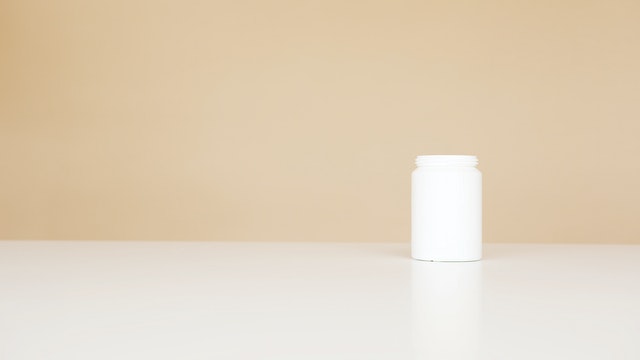What is butterbur?
Butterbur is a plant that grows in Europe and in some parts of Asia and North America.
The leaves of the plant were traditionally used to wrap and protect butter in warm climates. This is where its name comes from.3
Throughout history, particularly in the Middle Ages and during the 17th century, butterbur has been used to treat a wide variety of ailments.
During that time, it was used to treat fevers, coughs, asthma, skin conditions, and the plague.3
In the present day, there is particular interest in the use of butterbur for migraines and other headaches, allergic rhinitis, and other allergy symptoms.3
Benefits of butterbur
In a time when alternative remedies have become exceedingly common, everyone is looking for the next plant with potential.
Considering butterbur’s history of medicinal use, there is no wonder that people are looking to this shrub next.
Some potential benefits of butterbur include reducing the frequency of migraines, improving symptoms of allergic rhinitis, and the treatment of anxiety and depression in people with particular psychiatric disorders.3-4
Research has been done into each of these potential benefits and on the plant as a whole.
It has been found that butterbur contains some compounds that do have medicinal effects on the body.4
Butterbur for migraine
Migraines are recurrent, throbbing headaches that are typically accompanied by nausea and visual disturbances.6
Those affected can face debilitating pain and may find it difficult to carry out their day-to-day activities. Migraines typically run in families and can affect both adults and children.
There is some evidence that butterbur, and its extracts, activate a certain protein channel in human cells, which can decrease inflammation in nerves.2
It is believed that this is how butterbur has traditionally relieved migraine and headaches in some people.
Recent research has found that butterbur may have a place as a part of a holistic approach to the prevention of migraines.6
Butterbur for allergies and allergic rhinitis
Allergic rhinitis is a condition caused by allergens. Some people refer to it as “allergies”.
Allergic rhinitis may involve sneezing, runny or stuffy nose, or teary and itchy eyes. It often appears seasonally, in tandem with the growth of an individual’s allergic triggers.4
Much like with migraines, the severity of allergic rhinitis may vary and some people may find that the condition is so severe that it interferes significantly with their day-to-day lives.
Research has found that the leaves and roots of butterbur contain naturally occurring compounds that have medicinal effects.
These compounds are referred to as petasins.4
When extracted and compared against a placebo in a double-blind clinical trial, one of these petasins has been found to have significant effects in reducing the severity of allergic rhinitis.
It is believed that these petasins exhibit an anti-inflammatory effect, thereby reducing the body’s allergic response. However, this mechanism is not yet fully understood.4
Further studies are needed to prove the use of butterbur for allergic rhinitis, as conclusive evidence has been hard to come by.1
Cautions and concerns
Butterbur is so widely recognized that in 2012 its use was recommended by the American Academy of Neurology to prevent migraines in adults and children.
However, this recommendation was discontinued in 2015 as butterbur was found to have possible toxic effects on the liver.5
These safety concerns have led to further analysis of the use of butterbur as alternative medicine.
It has been found that some products containing butterbur include toxic compounds called pyrrolizidine-alkaloids (PAs). These compounds can have many negative effects on the body, including damage to the liver, lungs, and blood vessels.
They may also cause cancer.5
Fortunately, PA-free butterbur products do exist.
These products have been deemed safe by some studies when taken for a period of up to 16 weeks.6
However, some products labeled as PA-free have tested positive for the toxic chemical. In addition, the long-term use of butterbur has not been extensively studied.
PA-free butterbur products may have some mild side effects, including itchy eyes, diarrhea, fatigue, upset stomach, and drowsiness.1
Those with allergies to some plants may also find that they are allergic to butterbur.
In particular, people who are allergic to ragweed, chrysanthemums, daisies, and marigolds should be cautious.3
Those who are pregnant and breastfeeding should avoid the use of butterbur products entirely.
There is a risk of birth defects and liver damage for PA-containing products and PA-free products have not been studied in pregnant and breastfeeding populations.3
Like with any medication, alternative, or otherwise, be sure to discuss butterbur with your healthcare provider. Your healthcare provider may tailor your plans to help achieve your health goals.
You can work together to determine the correct treatment plan for you.
References
- Bayram A, Cingi C, Friedman O. Complementary and alternative medicine in allergic rhinitis. Challenges in Rhinology. 2020:109-119. doi:10.1007/978-3-030-50899-9_13
- Benemei S, De Logu F, Li Puma S, et al. The anti-migraine component of butterbur extracts, isopetasin, desensitizes peptidergic nociceptors by acting on Trpa1 cation channel. British Journal of Pharmacology. 2017;174(17):2897-2911. doi:10.1111/bph.13917
- Butterbur. National Center for Complementary and Integrative Health. https://www.nccih.nih.gov/health/butterbur. Accessed February 16, 2022.
- Schapowal A. Butterbur ZE339 for the treatment of intermittent allergic rhinitis. Archives of Otolaryngology-Head & Neck Surgery. 2004;130(12):1381. doi:10.1001/archotol.130.12.1381
- Sutherland A, Sweet BV. Butterbur: An alternative therapy for migraine prevention. American Journal of Health-System Pharmacy. 2010;67(9):705-711. doi:10.2146/ajhp090136
- Wells RE, Beuthin J, Granetzke L. Complementary and integrative medicine for episodic migraine: An update of evidence from the last 3 years. Current Pain and Headache Reports. 2019;23(2). doi:10.1007/s11916-019-0750-8
Photo by Artem Podrez from Pexels



